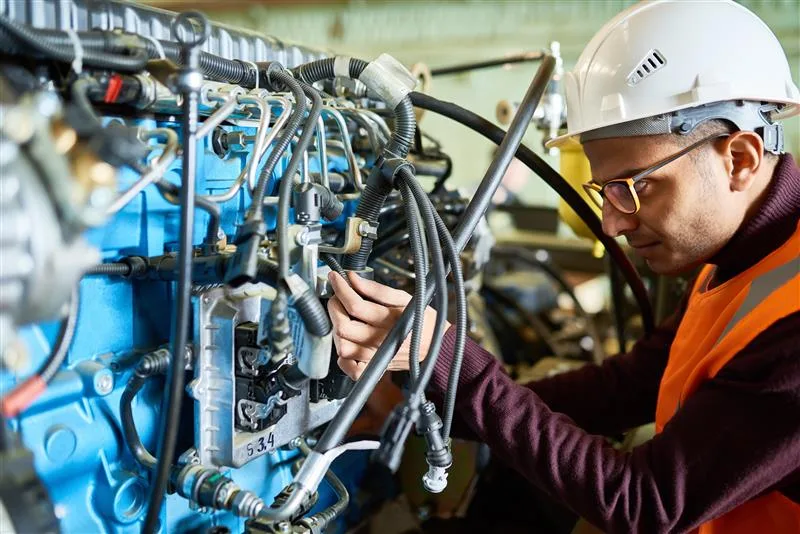Hydraulic systems are the heart of modern heavy construction equipment. From excavators and loaders to bulldozers and cranes, hydraulic components power the movement and force that make construction machinery so effective. However, like any powerful system, they require consistent care to maintain peak performance.
Hydraulic system maintenance isn’t just a technical necessity—it’s a safeguard against catastrophic failures, costly repairs, and unexpected project delays. In this guide, we’ll dive deep into the importance of maintaining hydraulic systems, best practices to follow, and how preventive care can significantly reduce equipment downtime.
Why Hydraulic System Maintenance Is Critical
Hydraulic systems operate under high pressure and are exposed to harsh environments. This makes them vulnerable to wear, contamination, and leaks. Poorly maintained systems can lead to:
- Loss of machine efficiency
- Hydraulic fluid contamination
- Pressure control failures
- Sudden equipment shutdowns
- Expensive component replacements
Implementing routine hydraulic system maintenance can help avoid these problems and extend the service life of your heavy machinery.
1. Inspect for Leaks and Damaged Seals
Hydraulic leaks are a common cause of fluid loss, reduced pressure, and equipment breakdowns. Regularly inspect:
- Hydraulic hoses and connections
- Seals, gaskets, and O-rings
- Cylinder surfaces and fittings
Leaks not only compromise system pressure but also pose safety and environmental risks. Address any visible seepage immediately to prevent escalation.
Pro Tip: Use UV dye and inspection lights to detect hidden or minor leaks early.
2. Maintain Clean Hydraulic Fluid
Hydraulic fluid is the lifeblood of your system. Contaminated fluid can cause corrosion, abrasion, and overheating. Key steps to ensure clean fluid:
- Use only manufacturer-recommended hydraulic oil.
- Keep fill caps and reservoirs sealed tightly.
- Regularly change filters and fluid based on usage.
- Monitor fluid for discoloration, odor, or particle presence.
Contamination is the top reason for hydraulic system failure. Implementing strict fluid cleanliness protocols greatly enhances system longevity.
3. Monitor Pressure and Temperature
Hydraulic systems are pressure-sensitive. Operating outside the recommended pressure or temperature range can cause component fatigue or failure.
- Install pressure gauges and temperature sensors.
- Check relief valves and calibrate them regularly.
- Never exceed the OEM pressure specifications.
Overheating often occurs due to fluid degradation, blocked filters, or excessive load cycles. Staying within limits avoids system strain.
4. Inspect Hydraulic Hoses and Lines
Hoses endure high pressure and constant flexing. Routine checks can identify problems before they escalate:
- Look for cracks, blisters, or bulges.
- Check for hose rubbing or chafing.
- Ensure connections are tight but not overtightened.
Replace any compromised hoses immediately to avoid fluid bursts and operational hazards.
5. Maintain System Filters
Filters protect your hydraulic system from contaminants. Clogged or damaged filters reduce flow, increase heat, and stress components.
- Replace filters at recommended intervals.
- Use quality filters matching OEM specs.
- Label filters with change dates for better tracking.
A disciplined filter replacement routine supports fluid purity and pressure balance.
6. Perform Regular System Flushing
System flushing is a deeper clean that removes debris and buildup from internal passages. It’s especially important when:
- Rebuilding or overhauling hydraulic components
- Swapping fluid types
- After major contamination events
Use a flushing rig with compatible fluid to flush the entire hydraulic circuit thoroughly.
7. Implement a Scheduled Maintenance Plan
Preventive maintenance is more cost-effective than reactive repairs. Establish a detailed schedule that includes:
- Daily visual checks
- Weekly and monthly inspections
- Quarterly pressure and temperature tests
- Annual full-system reviews
Use equipment logs and maintenance software to track service history and spot patterns.
8. Train Operators on Hydraulic Best Practices
Improper equipment operation can lead to hydraulic strain or damage. Operator training should include:
- Gentle control engagement
- Avoiding sudden pressure spikes
- Monitoring warning indicators
- Reporting irregularities promptly
Educated operators contribute to the health and performance of hydraulic systems.
9. Store Equipment Properly
Idle machinery should still be cared for to preserve hydraulic integrity:
- Retract hydraulic cylinders to protect rods
- Store in covered, clean areas
- Run systems periodically to keep seals lubricated
Proper storage helps prevent corrosion, contamination, and part degradation during off-seasons.
10. Keep Detailed Service Records
Maintenance documentation offers long-term benefits:
- Track recurring issues
- Confirm warranty compliance
- Make informed repair decisions
Records also increase resale value and streamline audits.
Final Thoughts: Invest in Reliable Maintenance Support
Hydraulic system maintenance is an essential investment in uptime, safety, and operational efficiency. By following structured maintenance protocols, construction firms can reduce downtime, improve project timelines, and minimize costly repairs.
For contractors and equipment owners in Washington, Williams Diesel LLC stands out as a dependable partner in heavy equipment servicing. With expert technicians and a deep understanding of hydraulic systems, they offer professional support to keep your machines running at peak performance.
Whether you’re maintaining a single backhoe or managing a full construction fleet, proactive hydraulic care pays off—both in reliability and in your bottom line.








Comments are closed